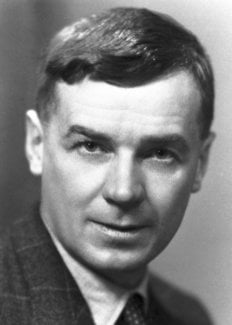Richard L.M. Synge
Biographical

Richard Laurence Millington Synge was born at Liverpool on October 28th, 1914, as the son of Laurence Millington Synge, of Liverpool Stock Exchange, and Katharine Charlotte Swan. In 1928 he went to Winchester College, where he studied mainly classics until 1931, thereafter natural science. In 1933 he entered Trinity College, University of Cambridge and studied physics, chemistry and physiology for Part I of the Natural Sciences Tripos (1935) and biochemistry for Part II (1936). During 1936-1939 he was a research student under supervision of Mr. N.W. Pirie in the University Biochemical Laboratory headed by Sir Frederick G. Hopkins, and during 1939-1941 at the Wool Industries Research Association at Leeds. He obtained his Ph.D. degree at Cambridge in 1941. In the same year, he joined the staff of the Wool Industries Research Association at Leeds and in 1943 that of the Lister Institute of Preventive Medicine, London, in the Biochemistry Department under W.T.J. Morgan. Since 1948, he has been Head of the Department of Protein Chemistry at the Rowett Research Institute at Bucksburn, Aberdeen.
The circumstances of his work up to 1945, including the collaborative work on partition chromatography and related topics, are described in the Nobel Lectures by A.J.P. Martin and himself. They gave the first demonstration of partition chromatography to the Biochemical Society at its meeting at the National Institute for Medical Research, London, on June 7th, 1941 [Chem.Ind.(Lond.), 19 (1941) 487], the first published description appearing in the Biochemical Journal, 35 (1941) 1358.
Since 1945 Dr. Synge has been mainly interested in analytical problems concerning the larger peptide molecules, as antibiotics and as intermediates in protein metabolism. From 1942 to 1948 he worked almost exclusively with the antibiotic peptides of the gramicidin group. In 1946-1947 he spent eight months with Professor Tiselius at Uppsala, studying the application of his adsorption methods to these compounds.
At the Rowett Research Institute, directed by D.P. Cuthbertson, he has been particularly concerned with the digestion of proteins by the ruminant animal and its associated micro-organisms, with peptides, proteins and other components of plant material, and with physico-chemical methods for the purification of intermediates in the metabolism of proteins. Work begun about 1950 with D.L. Mould and A. Tiselius on electrokinetic ultrafiltraltion of various polysaccharides has been developed in a number of directions to take advantage of molecular-sieve effects, especially in the presence of hydrogen-bond breaking solvents.
In 1958-1959, he spent a year at Ruakura Animal Research Station, Hamilton, New Zealand, working with E.P. White on isolation of the toxic fungal component sporidesmin.
Dr. Synge was made a Fellow of the Royal Society in 1950 and of the Royal Institute of Chemistry in 1952. He is an honorary member of the American Society of Biological Chemists.
In 1943 he married Ann Stephen, daughter of the late Adrian and Karin Stephen, psychoanalysts. They have four daughters and three sons, in order of decreasing age: Jane, Elizabeth, Matthew Millington, Patrick Millington, Alexander Millington, Charlotte, and Mary.
This autobiography/biography was written at the time of the award and first published in the book series Les Prix Nobel. It was later edited and republished in Nobel Lectures. To cite this document, always state the source as shown above.
Richard L.M. Synge died on August 18, 1994.
Nobel Prizes and laureates
Six prizes were awarded for achievements that have conferred the greatest benefit to humankind. The 14 laureates' work and discoveries range from quantum tunnelling to promoting democratic rights.
See them all presented here.
